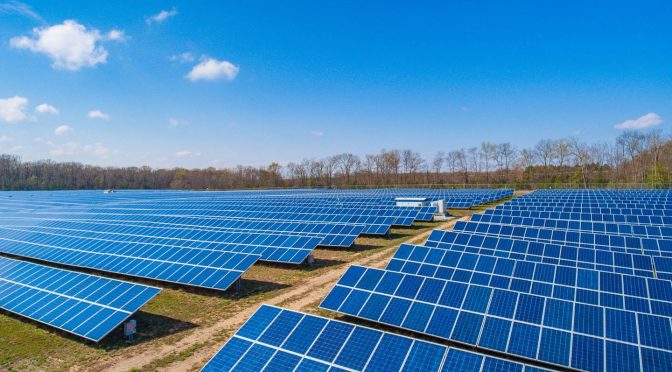Wind energy and concentrated solar power have reduced their costs significantly, but it is photovoltaic that has reduced their costs dramatically thanks to China. Annual investments of more than 7 billion would see Latin America’s photovoltaic capacity increase from the current 7 gigawatts (GW) to more than 280 GW by mid-century, although Asia, North America and Europe continue to have the greatest capacity. The photovoltaic solar capacity will exceed 8,000 GW by 2050.

At
that time, photovoltaic solar energy would represent the second largest
source of energy immediately after wind power, generating a quarter of
the world’s energy, as reflected in the report “The future of
photovoltaic solar energy,” presented in Sun World 2019 in Lima, Peru
In
total, Global Solar Power’s capacity would increase from 480 GW in 2018
to more than 8,000 GW in 2050, growing by almost 9% on average per
year.
“Photovoltaic solar energy and other renewable energies such as
solar thermal and wind energy represent the effective and ready
solution to meet the growing demand for energy and limit CO2 emissions
at the same time,” said Francesco La Camera, CEO of IRENA. “Renewable
energies are practical, economical and safe for the climate. They are
key to sustainable development, allowing access to energy, stimulating
economic growth, creating jobs and improving health. ”
In particular,
solar energy will become one of the most important energy sources by
2050. Projected growth rates in markets such as Latin America show that
we can extend the energy transition to all countries. It’s possible.”
If
accompanied by strong policies, the transformation driven by renewable
energy, such as solar, can bring substantial socio-economic benefits
according to the new IRENA report. The global solar industry has the
potential to employ more than 18 million people by 2050, four times the
current 4.4 million jobs.
During the last decade, the capacity of
photovoltaic solar energy installed outside the network has multiplied
by more than ten, from approximately 0.25 GW in 2008 to almost 3 GW in
2018 worldwide.
With its modular and flexible nature, photovoltaic
solar technology can be adapted to a wide range of off-grid applications
and local conditions. In fact, off-grid photovoltaic solar energy is an
essential technology to achieve universal access to electricity in line
with the UN Sustainable Development goals.
Similarly, the deployment
of photovoltaic solar systems on the roof has increased considerably,
which makes photovoltaic solar energy in some markets more attractive
than buying electricity from the grid. The competitiveness of
distributed solar energy is clearly increasing deployment in large
markets, including Brazil, China, Germany and Mexico.
Key statistical aspects of the report.
Accelerating photovoltaic solar energy could reduce energy-related CO2 emissions by 21% by 2050.
With
more than 50% of installed capacity by 2050, Asia (mainly China) would
continue to dominate photovoltaic solar energy, followed by North
America (20%) and Europe (10%). The Latin American market would increase
from 7 GW in 2018 to more than 280 GW.
The annual investment in
photovoltaic solar energy should increase on average by 68% worldwide,
from $ 114 billion in 2018 to $ 192 billion by 2050.
The total cost
of electricity (LCOE) for photovoltaic solar energy will continue to
decrease from an average of 85 cents per kilowatt hour (kWh) in 2018 to
between 5-14 cents per kWh by 2050.
Due to innovations, photovoltaic solar energy remains a rapidly evolving industry. Floating photovoltaic energy is one of the most prominent examples, with a general cumulative installed capacity exceeding 1 GW by 2018. Battery storage and electric vehicles are essential solutions to support the network and manage large amounts of photovoltaic solar energy, for guarantee the flexibility of the energy system.


